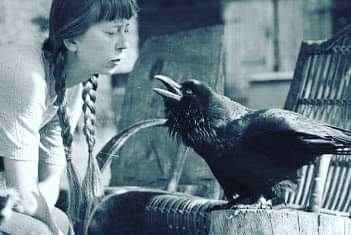Extraordinary Life of Simona Kossak

Simona Kossak was a Polish biologist, ecologist, author, Ph.D. in forestry, and uncompromising conservation activist.

They named her a witch because she chatted with animals and owned a terrorist-crow, who stole gold and attacked bicycle riders.
People called the crow a tamed villain and a thief. He terrorized half of the Białowieża .region. He stole cigarette cases, hairbrushes, scissors, cutters, mouse traps, and notepads. He attacked people. He tore up bicycle seats.
He stole documents, he stole lumberjacks’ sausages in the woods and made holes in grocery bags. He clung at men’s pant legs, pulled at women’s skirts, and pricked their legs. People thought that Korasek – because that’s what he was called – was some kind of a punishment for their sins.

Simona Kossak spent more than 30 years in a wooden hut in the Białowieża Forest, without electricity or access to running water.
A lynx slept in her bed, and a tamed boar resided under the same roof with her. She was a scientist, ecologist, and the author of award-winning films, as well as radio broadcasts. She was also an activist who fought for the protection of Europe’s oldest forest.

She was the great-granddaughter of Juliusz Kossak, the granddaughter of Wojciech Kossak, and the daughter of Jerzy Kossak – three painters who loved both Polish landscapes and history.

She was also the niece of Maria Pawlikowska-Jasnorzewska and Magdalena Samozwaniec. Simona was meant to be a son and the fourth Kossak – holding easels and carrying on her famous surname.

Instead, she spent more than 30 years in a wooden hut in the Białowieża forest. Simona believed that life ought to be simple and close to nature. Living amongst animals, she found something that she never could with her fellow humans.

In 1993, within the strict natural reserve territory, Simona came across two metal jaw traps put up by the Mammal Research Plant team, so she took them with her and denied giving them back. She was blamed by the scientist for stealing the research apparatus. The matter was interrogated by the Regional Prosecution in Hojnówka and the 2nd Criminal Section of the Regional Court in Bielsko Podlaskie. During the hearing conducted by the Prosecution, in response to the question of what kind of a threat such research apparatus in the Białowieża Forest related to animals, Simona answered:

In my opinion, it was a lethal threat not only to the animals but also to the guards. Each animal that falls into the trap is potentially condemned to die if the wound to the paws is heavy. With a population that numbers 12 specimens, and including poaching and chance deaths of wild animals, it is a lethal threat to the continuity of the lowland lynx type, whose genetic scope is extraordinary across all of Europe, because there are no more lowland lynxes in Europe. It is a shame to the world of science for us to have contributed to this.

 My First News Item
My First News Item My Nine News Item
My Nine News Item